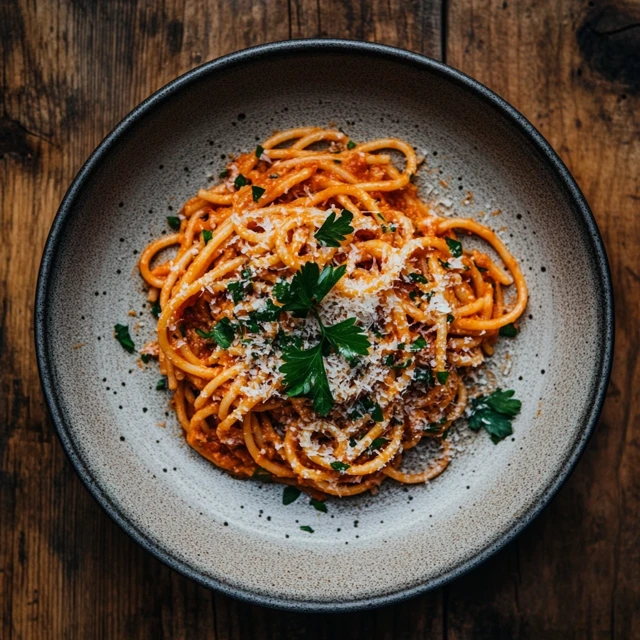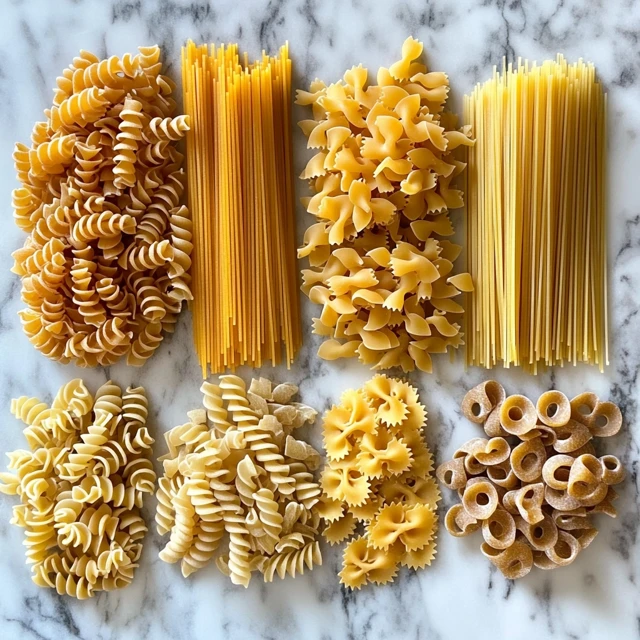Pasta comes in many shapes and sizes, each designed to enhance different dishes and hold sauces in unique ways. One popular and fun pasta shape is the wheel-shaped pasta, known for its playful appearance and ability to hold sauces effectively. But is wheel pasta a real type of pasta, and how is it used in cooking? Let’s dive into everything you need to know about this interesting pasta variety.
check out this https://eassyrecipes.com/category/dinner/
Understanding Wheel-Shaped Pasta
Wheel-shaped pasta is indeed a recognized type of pasta, commonly referred to as Rotelle, which means “little wheels” in Italian. It is known for its round shape with spokes that resemble a wagon wheel, making it a favorite for both kids and adults.
What Is Wheel Pasta Called?
The official name for wheel pasta is Rotelle, derived from the Italian word for “wheels.” Some people also refer to it as “wagon wheel pasta” due to its resemblance to the wheels of old-fashioned wagons.
check out this https://eassyrecipes.com/category/dinner/
Key characteristics of Rotelle pasta:
- Circular shape with radiating spokes.
- Hollow spaces that allow sauces to cling.
- Firm texture that holds up well in various dishes.
Wheel pasta is often confused with Rotini, which is spiral-shaped, but the two are distinct in both texture and appearance.
The History and Origin of Wheel Pasta
Like most pasta varieties, wheel pasta has roots in Italy, where pasta-making has evolved over centuries. It is believed that wheel-shaped pasta was created to make meals more visually appealing and to provide a pasta that could hold onto thick sauces efficiently.
Wheel pasta gained popularity worldwide due to its fun shape, which makes it an attractive option for families and pasta enthusiasts looking for variety in their dishes.
How Wheel Pasta Is Made
Wheel pasta is typically made from durum wheat semolina, which gives it a firm texture that holds its shape during cooking. The production process involves:
- Mixing the dough: Durum wheat flour and water are combined to form a stiff dough.
- Shaping: The dough is pressed through molds that create the wheel shape with intricate details.
- Drying: Once shaped, the pasta is dried to preserve its texture and shelf life.
- Packaging: Finally, the pasta is packaged and distributed to grocery stores worldwide.
Homemade versions can also be made using pasta rollers and specialty cutters to achieve the unique wheel shape.
check out this https://eassyrecipes.com/category/dinner/
Popular Ways to Use Wheel Pasta

Wheelpasta is not just about looks; it’s also a versatile option that works well in a variety of dishes. Its hollow spaces and ridges make it perfect for capturing sauces and ingredients.
Classic Dishes Featuring Wheel Pasta
Some of the most popular dishes that feature wheel pasta include:
- Cheesy baked wheel pasta: A comforting dish made with cheese sauce and baked until golden brown.
- Tomato and basil rotelle: A simple dish using fresh tomato sauce, basil, and parmesan cheese.
- Creamy Alfredo wheel pasta: A rich dish featuring creamy Alfredo sauce and grilled chicken.
Due to its sturdy texture, wheel pasta is great for baked dishes and hearty sauces.
Best Sauces to Pair with Wheel Pasta
Because of its unique shape, wheel pasta pairs well with both light and heavy sauces. Some recommended options include:
- Tomato-based sauces: Marinara, arrabbiata, and chunky vegetable sauces.
- Cream-based sauces: Alfredo, carbonara, or cheese-based sauces.
- Pesto sauces: Classic basil pesto or sun-dried tomato pesto.
Its ability to hold sauce inside the spokes makes it a great choice for flavorful, saucy dishes.
Fun Recipes for Kids Using Wheel Pasta
Wheel pasta is a favorite among kids due to its fun shape and bite-sized nature. Here are a few creative ideas:
- Pasta salad: Mix wheelpasta with colorful veggies, cheese, and a light dressing.
- Mac and cheese wheels: A playful twist on traditional mac and cheese.
- Mini pasta pizzas: Use cooked wheelpasta as a base, topped with tomato sauce and melted cheese.
These dishes make meal times enjoyable while also providing a balanced meal.
Nutritional Value of Wheel Pasta

Wheelpasta, like most traditional pasta types, is made from durum wheat semolina, which provides essential nutrients such as carbohydrates, fiber, and protein. Understanding its nutritional profile can help you make informed dietary choices.
Calories and Macronutrient Breakdown
A typical serving of cooked wheel pasta (about 1 cup or 140 grams) contains:
- Calories: Around 200-220 kcal
- Carbohydrates: 40-45 grams
- Protein: 7-8 grams
- Fats: 1-2 grams
- Fiber: 2-3 grams
Wheel pasta is primarily a source of complex carbohydrates, which provide steady energy throughout the day. The small amount of protein helps in muscle repair, while the fiber content supports digestion.
Is Wheel Pasta a Healthy Choice?
Wheelpasta can be part of a balanced diet when consumed in moderation. It offers several health benefits, such as:
- Energy Boost: Thanks to its complex carbohydrates, it provides long-lasting energy.
- Digestive Support: Whole wheat or enriched versions contain dietary fiber that aids digestion.
- Nutrient Fortification: Many commercially available wheelpasta options are fortified with essential vitamins such as B vitamins and iron.
However, it is essential to consider portion sizes and the types of sauces or toppings used, as high-calorie ingredients like creamy sauces and cheeses can add extra calories and fats.
Comparing Wheel Pasta to Other Pasta Types
Wheelpasta offers a unique texture compared to other pasta varieties. Here’s how it stacks up against popular pasta options:
| Nutritional Comparison (per 1 cup cooked) | Wheel Pasta | Spaghetti | Penne |
|---|---|---|---|
| Calories | 200-220 kcal | 220 kcal | 210 kcal |
| Carbohydrates | 40-45 g | 43 g | 42 g |
| Protein | 7-8 g | 8 g | 7 g |
| Fiber | 2-3 g | 2 g | 3 g |
While wheelpasta has a similar calorie and nutrient content as other pasta types, its shape provides better sauce retention, making it an excellent option for thick and chunky sauces.
Buying and Storing Wheel Pasta
To get the best quality and taste, it is important to know where to buy wheel pasta and how to store it properly.
Where to Buy Wheel Pasta
Wheelpasta is widely available in most supermarkets and online stores. Some of the best places to purchase it include:
- Grocery Stores: Look for popular brands in the pasta aisle. Many supermarkets carry both regular and whole wheat versions.
- Online Retailers: Websites like Amazon, Walmart, and specialty Italian food stores offer a variety of options.
- Local Markets: Some specialty stores and delis carry imported Italian brands that offer authentic flavors.
- Health Food Stores: For whole grain or gluten-free alternatives, check health-focused retailers.
When buying wheelpasta, check the packaging for ingredients, expiry dates, and fortifications such as added vitamins and minerals.
How to Properly Store Wheel Pasta
Good storage helps pasta stay fresh and tasty over time. Here’s how to do it right:
When You Buy New Pasta:
- First, put it in a container with a tight lid and keep it in a cool, dry spot.
- Next, make sure to keep it away from sun and water so it stays fresh longer.
- Also, eat it before the date on the package to enjoy the best taste.
For cooked wheel pasta:
- First, put it in a container with a tight lid and keep it in your fridge for up to 3 days.
- Then, mix in a little olive oil so the pasta doesn’t stick together.
- Also, remember to put leftover pasta in the fridge quickly after cooking.
For freezing:
- First, cook the pasta until it’s still a bit firm, then put it in freezer bags for up to 2 months.
- Later, when you want to eat it, move it to the fridge to thaw naturally.
Tips for Cooking WheelPasta Perfectly
Cooking wheelpasta correctly helps bring out its best flavor and texture. Follow these simple tips for perfect results:
- Use Plenty of Water: Boil at least 4 cups of water per 100 grams of pasta to prevent sticking.
- Salt the Water Generously: Adding salt enhances the flavor of the pasta from the inside.
- Stir Occasionally: Prevents the pasta from clumping together during cooking.
- Check for Al Dente Texture: Cook for 8-10 minutes and taste-test for a firm yet tender texture.
- Drain and Rinse (Optional): For cold pasta dishes, rinse under cold water to stop the cooking process.
By following these tips, you can ensure that your wheelpasta is cooked to perfection every time.
FAQs About WheelPasta
Wheelpasta is a fun and unique pasta shape that many people enjoy in various dishes. Below are answers to some frequently asked questions to help you better understand this pasta type and its place in the vast world of pasta varieties.
Is Wheel a Type of Pasta?
Yes, wheelpasta, commonly known as Rotelle (meaning “little wheels” in Italian), adds both fun and function to many dishes. Furthermore, its unique round shape with spokes looks just like tiny wagon wheels, thus making this pasta type not only catch the eye but also excel at holding sauces in its distinctive design.
Wheelpasta is loved for several reasons:
- Versatility: It pairs well with thick and chunky sauces due to its hollow spaces, which allow the sauce to cling to the pasta.
- Fun Appeal: Kids particularly enjoy its playful shape, making it a great option for family meals.
- Texture: Its firm structure helps it hold up well in baked dishes and pasta salads.
So, whether you’re making a classic pasta bake or a refreshing salad, wheelpasta offers both flavor and fun.
What Is the WheelPasta Called?
The official name for wheelpasta is Rotelle, which translates to “wheels” in Italian. Some other names used to describe wheelpasta include:
- Wagon WheelPasta: A common term used in English-speaking countries due to its resemblance to wagon wheels.
- Rotini (often confused): Although similar in appearance, rotini is actually a spiral-shaped pasta, not wheel-shaped.
- Ruote: Another Italian term occasionally used to describe this pasta type.
Rotelle is popular in dishes where the pasta needs to hold onto sauce well, such as creamy or chunky vegetable-based sauces.
What Is Spinny Pasta Called?
When people refer to “spinny pasta,” they are usually talking about spiral-shaped pasta varieties rather than wheelpasta. Some popular spiral pasta types include:
- Fusilli: A corkscrew-shaped pasta that is perfect for thick sauces.
- Rotini: Similar to fusilli but with a tighter spiral, often used in salads and casseroles.
- Cavatappi: A ridged, spiral-shaped pasta with a hollow center, great for cheese-based sauces.
While rotelle has a wheel-like shape with spokes, these spiral pasta varieties offer a different texture and hold sauce in their grooves rather than their hollow spaces.
Are There 600 Types of Pasta?
While the commonly recognized number of pasta varieties is around 350, some sources suggest that there could be as many as 600 types of pasta. This count includes regional variations, specialty pasta shapes, and modern adaptations.
Some factors contributing to the high number of pasta types include:
- Regional Specialties: Different regions in Italy have their own pasta traditions, such as orecchiette from Puglia and trofie from Liguria.
- New Innovations: Pasta manufacturers continue to create new shapes and variations to cater to changing dietary preferences, such as gluten-free or vegetable-based pasta.
- Naming Variations: Different regions and countries call the same pasta shapes by multiple names based on their local traditions and cultures.
Even though there may be hundreds of pasta varieties, each one has a unique purpose in terms of texture, sauce compatibility, and cultural significance.
Conclusion
Wheelpasta, also known as Rotelle, is a delightful and functional pasta type that stands out due to its playful shape and versatility. Whether you’re looking for a pasta that holds sauce well, adds visual interest to a dish, or appeals to children, wheelpasta is an excellent choice.
Understanding pasta varieties, from traditional long strands to fun-shaped options like rotelle, allows you to create delicious and satisfying meals suited to every occasion. So, the next time you’re planning a meal, consider giving wheelpasta a spin in your favorite recipe!

